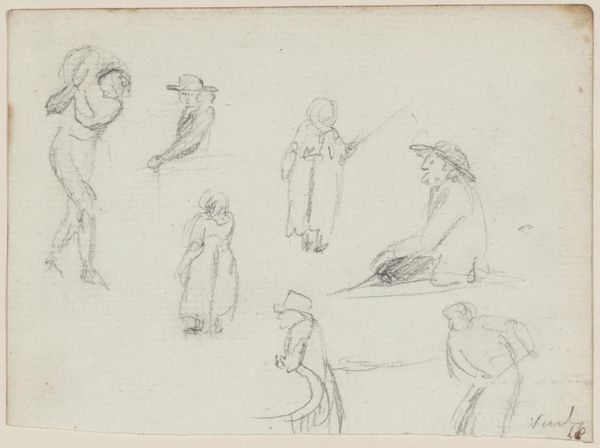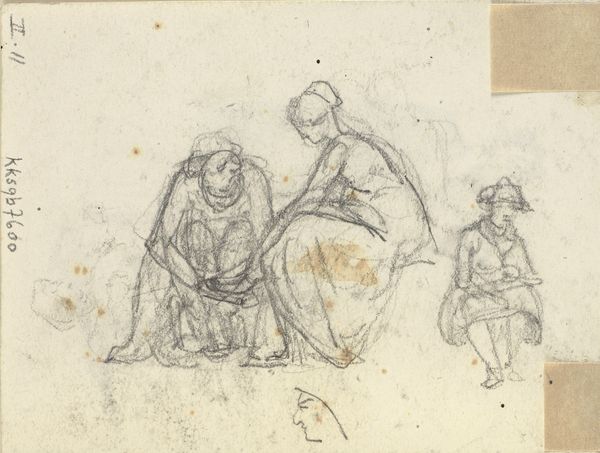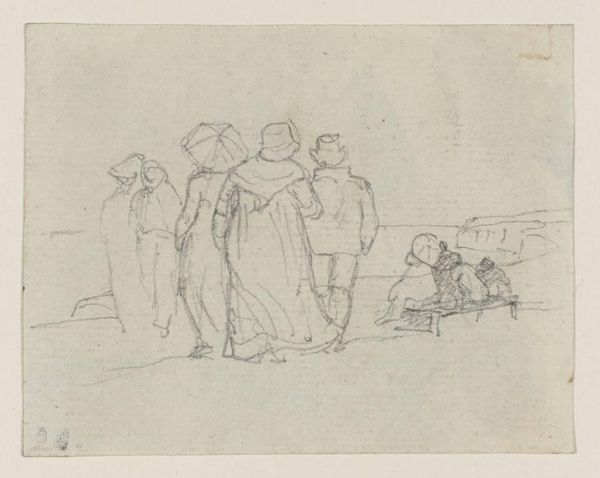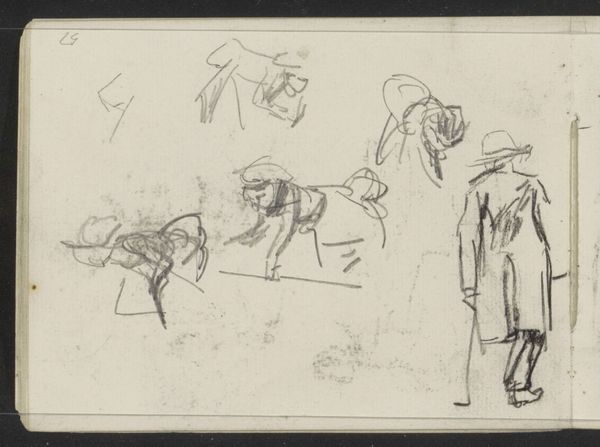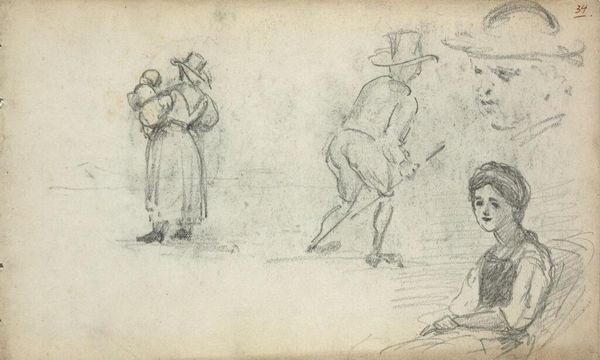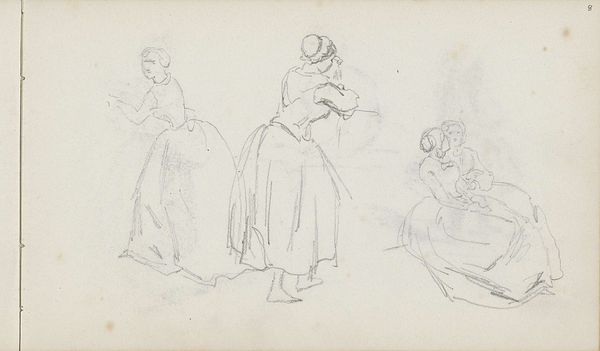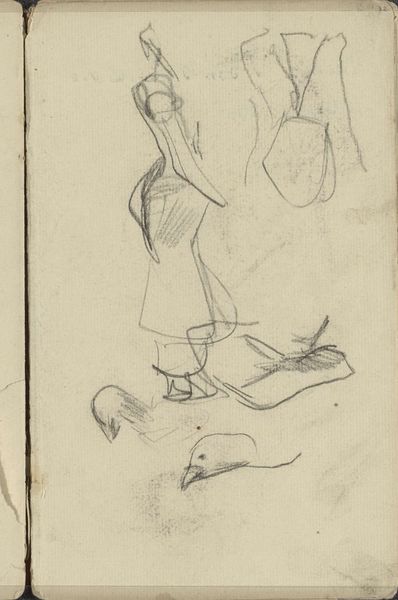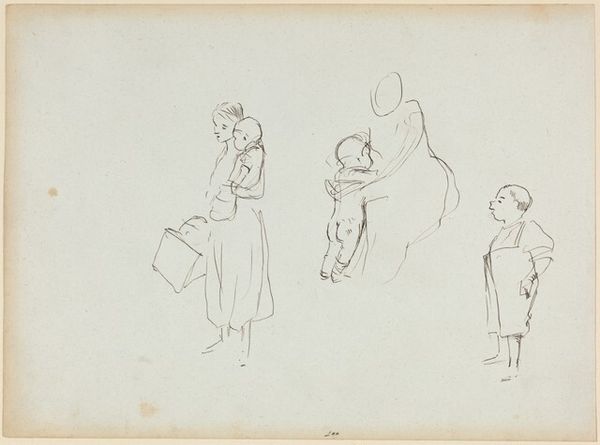
drawing, paper, pencil
#
drawing
#
imaginative character sketch
#
quirky sketch
#
dutch-golden-age
#
impressionism
#
landscape
#
paper
#
personal sketchbook
#
idea generation sketch
#
sketchwork
#
character sketch
#
pencil
#
sketchbook drawing
#
genre-painting
#
storyboard and sketchbook work
#
sketchbook art
#
realism
#
initial sketch
Dimensions: height 131 mm, width 210 mm
Copyright: Rijks Museum: Open Domain
Editor: So, this drawing, "Three Studies of a Working Woman," is by Jozef Israëls, dating from 1834 to 1911. It’s a pencil drawing on paper, currently held at the Rijksmuseum. It strikes me as incredibly raw and immediate, like a quick glimpse into the daily lives of working women. What do you see in this piece? Curator: It's interesting that you describe it as immediate. From my perspective, studying its socio-political context is important. Israëls often focused on the lives of the working class, presenting them with dignity during a time of significant social change. These were not just figures, they were individuals shaped by the industrial revolution. How does knowing this change your understanding of its "raw" feeling? Editor: That’s a great point. Knowing Israëls aimed to depict their dignity shifts my focus. The sketch-like quality now reads less about speed and more about capturing the essence of their labor. Does the museum's display of this piece further contribute to how we see this art? Curator: Absolutely. Museums play a crucial role in legitimizing and interpreting art. Placing a sketch like this, normally destined for the private sketchbook, within a prestigious collection elevates the subject matter. Do you think presenting this “slice of life” in a public institution influences its social importance and creates awareness of working-class people’s labor? Editor: Yes, definitely. The act of preservation and display gives these working women a place in the historical narrative. Seeing them here gives value to lives that might otherwise be ignored by the official chronicles of society. Curator: Precisely. So we move from Israëls’s social perspective on the laboring subject of the drawings, to the modern context of museum curatorship which legitimizes the representation of those laboring subjects and that, in turn, enhances public awareness and respect for social progress. Editor: It's fascinating how seeing the social and political background deepens my appreciation and reveals its complex layers.
Comments
No comments
Be the first to comment and join the conversation on the ultimate creative platform.

